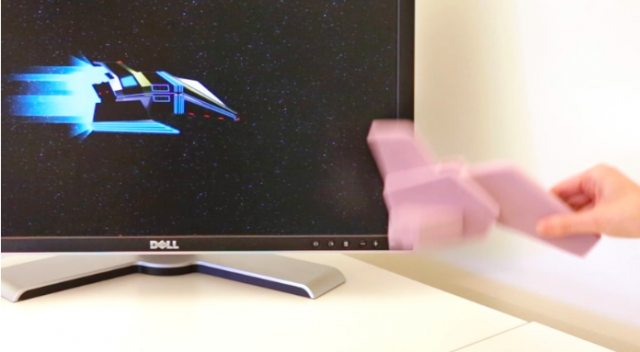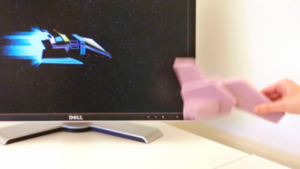In case you missed it last week, ACH CHI conference took place in San Jose. This is the world class conference on human-computer interaction that looks to define and enhance the cutting-edge research in this field.

Now, recent advances in RFID signal analysis by Disney Labs, at CMU have shown how these low cost RFID tags that are used for inventory tracking can be used as very low cost input device sensors, monitoring touch, motion and more from several meters away, wirelessly, battery-free and for less than a dime per object.
The work is part of the research that came out of the future interfaces group at Carnegie Mellon University (CMU) based in Pittsburgh, PA, where Disney Research also hails. At CHI this year, the Disney group showed off its RFID sensing, and how passive RFID tags used in inventory control and costing less than 10-cents, can be used to empower a physical device to interact with digital devices and software algorithms running in a virtual world. Along with other applications, the group nested just such an RFID tag into a model star cruiser demonstrating real-time tracking of the physical “toy” movements, animated in sync with screen action in the computer game.
 Disney Research at CHI 2016, Source CMU News
Disney Research at CHI 2016, Source CMU News
Using tagged physical objects, Disney Labs demonstrated the ability to infer trajectory, and how the device may be held or touched, all from the tag’s signal exploiting the parameters including signal strength, radio frequency phase and Doppler shift. But doing this real-time was the real trick, according to Disney’s research scientist, James McCann.
The breakthrough came using what the group calls RapID. A framework of advanced signal processing of highly uncertain information (signals) that predicts, with a high degree of certainty, specific outcomes that achieved orders of magnitude of performance improvements (from 2 seconds down to just 200 milliseconds.) The RapID framework shifts the focus from simple signal processing to probabilistic formulation, the weighing of event outcome possibilities rather than just focusing on signal processing. This enabled low-level uncertainty to be handled in a high-level fashion, according to the group’s paper presented at CHI.
RapID generated significantly reduced lag time benefits. “For instance, a slider controller might work by moving an object that successively obscures the antennas of a series of RFID tags; if one obscured tag suddenly is uncovered, the system might reason that the next tag in line will be obscured,” the Disney group reported. “By making it easy to add RFID-based sensing to objects, RapID enables the design of new, custom interactive devices with a very fast development cycle,” according to Alanson Sample, research scientist at Disney Research.
Empowering real-time tracking of unique tagged objects with free form movement using off the shelf, wireless, battery less and perhaps most importantly, inexpensive components can open up the flood gates of sensor/input device development.
Also from CHI this year, don’t miss Art Berman’s Display Daily on Skin Track technology (SkinTrack Turns a User’s Skin into an Auxiliary Smartwatch Touchscreen) shown for the first time this year at CHI. This is an on-skin touch tracking technique that “spills” computer interaction onto human skin from, say, a wearable device like a watch that virtually extends the desktop interaction area well beyond the small screen of a wearable and onto the users arm, hand or conceivably any other appendage.

